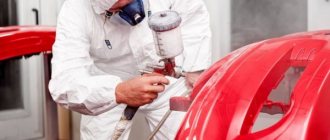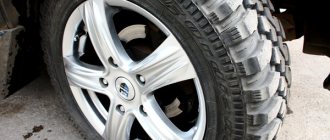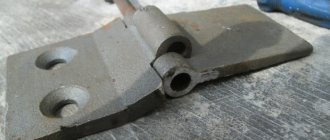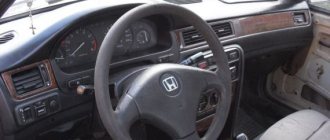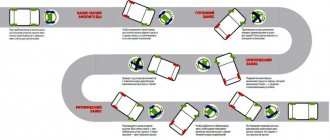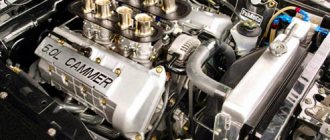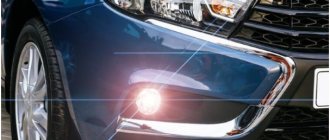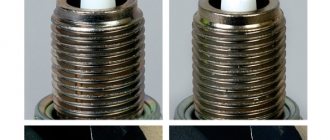How long does it take for a car to dry after painting?
During the drying of the newly applied paintwork, the process of polymerization of the paint components, or their crystallization, occurs. The crystallization period may vary and completely depends on the type of paint, application conditions and operation of the machine. Typically, acrylic enamels dry faster than others (2-3 days).
There are paints and varnishes whose crystallization time is significant - up to 14-28 days, and only during this period do they gain full strength. You also need to take into account the drying time of the varnish, which can also be quite long. In any case, you need to find out about the exact drying time from a car painter or, if you did the painting yourself, read the instructions on the paint packaging.
Infrared drying of a car after painting
How long after painting can you drive?
Premature use of the car can cause clouding of the fresh coat of paint and varnish, the appearance of stains and small scratches. This will ultimately reduce the service life of the machine, because rust can “settle” in defective areas. The appearance of the coating will also suffer, and the aesthetic qualities will be seriously reduced.
The ideal option is to wait 14-20 days after painting the car, and only then start driving it. In practice, this is most often impossible, so it is recommended not to operate the car for at least 3-7 days from the moment of painting, and then drive it as carefully as possible, following the recommendations of professionals and protecting it from any unfavorable factors.
How long before you can wash your car?
Washing a freshly painted car is strictly prohibited! However, when the car body becomes dirty, particles of dirt, dust, oils, and chemicals react with the paint, which has not yet gone through the stage of complete polymerization. Dirt seems to eat into the coating, scratch and spoil it, so a dirty car still needs washing.
Experts advise not to wash your car for a month after painting, if possible. Do not use high-pressure washing during this period, otherwise the coating may be damaged.
The minimum period of time during which washing is prohibited is 15 days, and even after this period, you should contact specialists for a delicate wash and do not scrub the body yourself. If the painting was done in winter, which does not happen often, you should not wash the body for as long as possible. It is better to find out about the exact period after which you can start washing from a car painter or read the instructions for the paint.
Prohibitions when washing a car after painting
In order for the operation of a new car paintwork to be long and problem-free, after painting you need to eliminate some actions and follow the advice of car experts:
- do not wash the car immediately after driving on a hot, sunny day, but first wait until the coating has cooled naturally;
- do not wash directly in the sun, work only in the shade;
- do not wash the car in the wind, do not allow debris or dust to get on the fresh paintwork, so as not to scratch it;
- do not place the car on gravel or sand surfaces, or place it on the grass while washing;
- do not use brushes, old sponges, other rough devices, as well as silicone or other scrapers to wash the body;
- do not use household detergents, especially powder ones;
- do not use cheap car shampoos of unknown brands, which can cause clouding of the paintwork;
- Do not use hard water for washing, which leaves white spots and stains - they will have to be scrubbed off, and this is harmful to the paint.
Gentle washing of the car should be carried out at least 3 times after painting. Only in subsequent washes can you follow the general recommendations for washing the body.
What not to do while washing
In order not to spoil the fresh paint layer when washing a car, you should consider what you absolutely should not do: – Under no circumstances should you wash your car immediately after a trip on a hot sunny day! The car must first cool naturally, otherwise the painted layer may become cloudy. – Do not wash your car in the sun, but only in the shade, as drops of water drying in the sun will cause the paint to fade unevenly. – You can’t wash your car in the wind. Specks of dust and debris brought by the wind and remaining on the surface of the body will become an abrasive, and this is a threat of scratches. In windy weather, a washed car will dry faster and white spots may appear on the surface from the shampoo used. They will have to be scrubbed thoroughly, and this does not help preserve the varnish layer. – Don’t even think about using a high-pressure apparatus to wash your car! Everything is done entirely by hand. How to wash a car We have already figured out how many days after painting you can finally wash your car - after 14. Now you need to figure out how to carry out this procedure so as not to harm your four-wheeled friend. At the same time, gentle washing should be done not only the first time after painting, but also 2-3 subsequent times. The ideal weather for washing is cloudy and cool. For washing, use a soft sponge and a light stream of water. Wet dirt can be removed with a soft cloth. If the dirt has already dried, first soak it well with water and then remove it.
Important! Never use a brush or rag to scrape off the dirt, otherwise you will need repainting very soon!
You should start washing your car from the roof. First, wet it with a gentle stream of water from a hose. If there is no running water, then use a garden watering can. After wetting the surface, dilute the shampoo in a partial bucket of water. Soak a sponge in this solution and wash (you can use a spray bottle if desired). Don't forget to wet the sponge in water as often as possible! After this, rinse off the detergent with a gentle stream of water from a hose fitted with a nozzle. At the very end, you should dry the body by walking over it with a soft cloth.
Please note that you should never wash your car with hard water, as it will leave white stains.
To avoid the solution of water and shampoo from drying out on the surface of the body and the appearance of white spots or streaks (they will have to be removed by rubbing these places with a damp cloth, which in our case is undesirable), you can not wet the entire car at once, but half at a time. After rinsing one part, apply shampoo to the second, and then rinse.
Pay attention to: Car varnish aerosol: main types, advantages and application technique
Rules for washing a car after painting
The ideal weather for the procedure is cool, cloudy, but without strong wind. If it is summer outside, then the washing is carried out indoors or in a shaded place.
Using detergents
During the first wash, it is better not to use detergents at all, so that the procedure is as gentle as possible on the fresh paintwork. Only when the body is heavily soiled do they use special car shampoos, excluding the application of ordinary soap solution, any cleaning agents, liquids and sprays. They often cause paint to fade and stain.
You should use special detergents to wash your car.
If you wash your car in the cold season, it is advisable to use silicone-based products. They form a thin protective film on the body, which will further protect the paint from the negative effects of environmental factors. Also, car dealerships sell polishing shampoos with wax, which give the paintwork an additional shine and also provide some protection from damage.
Another type of high-quality detergents is anti-corrosion shampoos, which prevent the development of rust. They can also be used for bodywork. It is recommended to wash glass, plastic elements, and mirror parts of the car with special products designed specifically for such materials.
Preparing for washing
Before carrying out washing procedures, you need to protect the interior, the space under the hood, and the trunk from the penetration of water and chemical compounds. They are tightly closed, like all hatches, other openings through which water can leak into the internal parts of the machine.
The car is positioned so that access to all areas of the body is free. They also check the water pressure in advance (it should not be high), and clarify the possibility of using warm, not hot and not too cold water.
Washing equipment
For the very first wash of the car, use only soft sponges. Any other equipment is prohibited, because any bristles will leave barely noticeable scratches on the fresh surface. Old sponges that have already been used will also not work; it is better to purchase new devices. When washing, you will have to rinse the sponge with water as often as possible so that there are no particles of dust or dirt left in it. If a high-quality sponge is not available, you can use a soft rag.
Car wash kit
Body wash
To wash the car, use a hose from which water is supplied under low pressure. If you don’t have a hose, even a garden watering can will do, although you will have to fill it quite often, so the procedure will be labor-intensive. First, the body is wetted with water to allow the dirt to swell well and move away from the surface. Afterwards, wash off the dirt, apply a little detergent to the sponge and carefully wipe the coating. Next, rinse the car thoroughly, completely removing any remaining foam.
The roof is washed first and only then proceed to the body. It is worth treating one side of the car first, then rinsing it off and moving on to the other side so that the detergent does not have time to dry out. All actions are carried out from top to bottom, otherwise dirty water will flow down clean surfaces. At the end of the work, dry the coating by wiping with a soft cloth. If this is not done, the magnesium and calcium salts from tap water will leave white spots when they dry.
The bottom part of the car gets dirty the most. To clean it, special gel or liquid compositions with high efficiency are used, which can even remove stains of oil, gasoline, and bitumen.
The product is applied to the bottom moistened with water, after 10 minutes it is washed off along with the dirt from the hose. It must be remembered that such substances are used no earlier than a month after painting the body.
Gentle wash
Washing the car should be done using gentle technology. First, the coating is thoroughly wetted with a gentle stream of water, after which dissolved shampoo and wax are applied. Then the surface is carefully washed with a sponge and rinsed thoroughly. After the car is completely washed and abundantly watered with clean water, it needs to be dried. Do not use hard water as it leaves white streaks. As for polishing, it should be carried out no earlier than after a month.
From this material you learned how long it takes to wash your car after painting. Following simple recommendations will allow you to preserve your new paintwork for a long time, preventing its damage.
General rules for operating the machine after painting
Immediately after painting, you need to handle the car very carefully. If travel cannot be avoided, try not to visit places where there is a lot of dust (for example, country roads). Also, do not drive on recently repaired roads, especially in areas of “pothole repair”, where bitumen residues may be present. Protect a freshly painted car from rain, sun, snow, do not scrape off dirt from it manually, and do not allow it to be hit by pebbles or other objects.
After complete crystallization of the coating, it is recommended to polish the body. They do not use abrasive polishing, but protective polishing, which will protect the layer of new paint from damage. Gently rub the polish into the surface of the body, allow the composition to dry, and then immediately put the car into operation. The above tips will significantly extend the life of the paint film. It’s worth taking care of your car so that you don’t have unnecessary problems and unnecessary expenses in the future.
Features of car operation after painting
The first time after painting, you need to handle the car very carefully: – it is advisable not to operate the car after painting for a week (if you still cannot avoid trips, then at least do not travel outside the city so that dust settles on the surface of the car as little as possible); – a freshly painted car should not be exposed to the sun or rain; – You cannot wipe dust from the surface of the car at this time, much less scrape off any remaining dirt after a trip in wet weather.
Pay attention to: Painting alloy wheels with your own hands: choosing a material, step-by-step painting instructions
